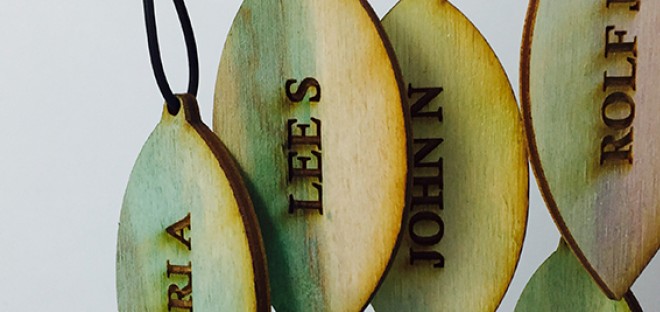Our Story
As the 60’s began to fade, new hope arrived for Manitobans waiting for the gift of a healthy kidney. In November 1969, the team at the Winnipeg General Hospital (now HSC Winnipeg) performed the province’s first kidney transplant.
Kidney transplantation is the treatment of choice for patients with end-stage renal disease because it saves lives and provides a better quality of life compared to dialysis.
The process behind kidney transplants today is much less complicated than it used to be. To prepare for the possibility of renal transplant services, a committee of trustees, administration and medical staff spent a year determining if the hospital had the necessary facilities and staff to support it. A moral and ethics committee was also formed to establish recommendations and procedures to guide the process. In October 1969, the hospital’s Board of Trustees officially approved the life-transforming procedure and the kidney transplant program began the following month.
Learn more about this first surgery from a first-hand account of one of the team members who participated in this historic event.
That first step more than 50 years ago set Manitoba on a path to making significant contributions in kidney disease research and transplantation practices that have made an impact around the world.
For more information about this and other collections, please visit HSC Winnipeg’s Archives.
Here are some highlights through the years:
Commemoration
Recognizing donors, living donors and donor families and the gifts that have been offered to others in need is important to the team. These are a few examples of how donors are honoured.
- Garden of Life
The Garden of Life was introduced in 1998 and is a living tribute to living and deceased organ and tissue donors. The garden at Assiniboine Park is planted and maintained by Assiniboine Park Conservancy staff along with staff from Transplant Manitoba – Gift of Life, recipients, living donors, organ donor families, and other volunteers.
Originally located close to the Park’s Shaftesbury Blvd entrance along Conservatory Drive, the garden was relocated to the English Garden in 2019.
After being inspired by their garden, Transplant Manitoba consulted with Pat Sherbin of the MORE program from Ontario to get ideas for creating a made-in-Manitoba Garden of Life. Transplant Manitoba’s goal was to develop a public space that symbolized what organ and tissue donation and transplantation is capable of – growth and new life. Transplant Manitoba approached Assiniboine Park and requested a highly visible area for the garden. The Superintendent of horticulture responded by providing 250 square metres outside the former conservatory building. Natassa Juck, a Winnipeg landscape artist, was hired to create the garden and her design incorporated a winding river shape that could house 3,000 plants.
Plants selected depicted the shape, colour or care of the vital organs used in human transplantation while at the same time, serving as a tribute to recipients, living donors, and their families. The types of plants used in the garden were lungwort (pulmonaria), bleeding hearts (dicenta) liver leaf (hepatica), heartleaf bergenia (bergenia). Medicinal plants were also used such as foxglove (digitalis) and Echinacea (an immune booster).
In its inaugural year, Shelmerdine Nursery and Schriemer’s donated all of the flowers required to fill the garden. Schriemer’s also donated the human resources and machinery necessary to create the garden. Reimer soils donated all the soil. In 1999, in addition to Shelmerdine Nursery and Schriemer’s greenhouse, Bartmanovich Greenhouses and St. Mary’s Nursery and Garden Centre donated 600 annual plants.
- Tree of Life
The Tree of Life was originally unveiled in 1997 during National Organ and Tissue Donation Awareness Week. The original tree was a 10-foot graphic tree image with leaf stickers representing individual donors. The leaves included the first name and last initial of the donor.The first ceremony was held at Eaton Place Shopping Centre. Jim Jerome, from Belle Foshe Designs, created the tree and provided the leaves. Filled with music, stories from donor families and transplant recipients; the program included a leaf ceremony and the presentation of the Donor Medal of Recognition. This national donor medal of honour acknowledges the kindness and generosity of organ donors and their families, and living donors.
Families were invited to put the leaf of their loved one on the Tree during the dedication ceremony. With the help of a media campaign to bring awareness to the first event of its kind in Manitoba, Transplant Manitoba was able to connect with donor families and living donors since the start of the program in 1969. Promotion of the event also generated a positive message about becoming an organ donor. Over 700 people attended the first event. The Tree of Life stayed at Eaton Place for many years, allowing many visitors to see the Tree and understand its importance.
The Tree of Life continues to gather the names of those who have given the ultimate gift. In 2017, the original tree had outgrown its capacity, so to mark the 20th anniversary of the Tree and to accommodate donor leaves for years to come, a new tree was created by Manitoba artist, Audrey Hiebert with leaves designed by another local artist, Beth Gage.
- Gift of Life flag
The Gift of Life flag, introduced in 2016, is a flag specially designed to honour every individual and family who chooses to donate life-saving organs either through living or deceased donation. The flag is raised at HSC Winnipeg on the corner of Sherbrook St and McDermot Ave after every donation opportunity.
The flag was first unveiled during National Organ and Tissue Donation Awareness Week (NOTDAW) 2016. A donor family, the Brewsters, was part of the event held at HSC Winnipeg. The Brewsters also participated in a video explaining the meaning behind the flag and why it flies.
Outreach
Raising awareness about organ and tissue donation means working with great people and meeting even more! Here is just a sample of some of the amazing activities the team has been a part of.
- Grey Cup Parade
The 1991 game between the Toronto Argonauts and the Calgary Stampeders was the first Grey Cup bash ever held in Winnipeg. It was a chilly of course, but the warm spirit of the staff, volunteers and organ transplant recipients who participated in the Grey Cup parade inspired the crowd. The Olynik family provided their flatbed and team of horses to help spread the word that “Transplant Works.”
- NOTDAW
2022 marks 25 years that National Organ and Tissue Donation Awareness Week (NOTDAW) has focused the country’s attention on organ and tissue donation and transplantation. It was proclaimed in 1997 after a private members bill came forward. Dan McTeague was moved to do something after a toddler, Stuart Herriott, was killed in a motor vehicle accident in his riding of Pickering-Scarborough East. Stuart’s parents donated his organs, and in turn, helped save and improve the lives of four other people. At the time, McTeague said the intent of the bill is to encourage education and awareness about organ donation.
The team has participated in many NOTDAW activities over the years by holding a variety of awareness events and promotional campaigns centred on having important conversations about donation, and sharing recipient and donor family stories through social media and media outlets. Many of the outreach events include green ribbon campaigns and green-lit landmarks.
- Comic Con
The signupforlife.ca team wasn’t quite sure how the Central Canada Comic Convention crowd would respond to information about organ and tissue donation, but we needn’t have worried. We were so warmly welcomed and our kidney suits were a hit! Superheroes come in all shapes and sizes, and we were happy to chat with fans from all franchises (and planets, kingdoms, eras and universes) who stopped by our booth to share their story or ask questions about the gift of life.
Milestones
Throughout the program’s history, there have been many important milestones, including the ones shared here.
- Kidney Camp
To help children life well with their kidney disease, challenge themselves and strive to be the best they can be, the Pediatric Kidney Transplant team created Kidney Camp in 1997 with financial support from incredible partners including the Kidney Foundation of Canada, Manitoba Branch, and the Winnipeg Foundation. The camp experience embodies much of what the team tries as to emphasize when helping children and youth live well with kidney disease: autonomy, empowerment – trying new things, self-discovery and self-esteem – all of which comes from pushing your own limits. Kidney camp is an important tool to help children and youth to meet these normal developmental milestones.
Kidney camp is often the first camping experience for many of these children and youth who have complex medical needs that preclude them attending conventional camps. Since a nurse and pediatric nephrologist also attend kidney camp, we provide the medical care required for the kids to have a successful week. Peritoneal dialysis is done in the cabins. For those who require hemodialysis, they boat over to the Kenora hemodialysis unit for a morning treatment and return by lunch time to join their cabin mates. All manner of care the children require such as tube feeding, dressing changes, catheterizations, injections, and medication administration are provided by the nurse and doctor.
- 1000th kidney transplant
To recognize this remarkable achievement, a special evening event was planned and more than 350 attended to celebrate the 1000th kidney transplanted in Manitoba. Number 1000 was a young man who received a kidney from his sister. She laughed at the time, “I’m just glad it was a kidney because that is the only organ I could spare!” The program reached this noteworthy milestone 34 years after its very first transplant in 1969.
- Signupforlife.ca
To mark National Organ and Tissue Awareness Week in 2012, the province launched signupforlife.ca, the province’s online organ and tissue donor registry. In its first eight hours, more than 1,000 Manitobans registered. 2022 marks 10 years of online service and a goal has been set to add another 10,000 new registrations.
For more milestones, please take a look at our timeline.








